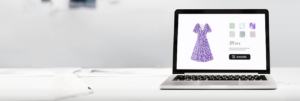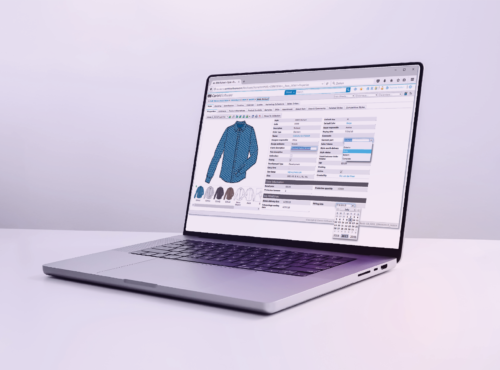 Fit retail becomes a training organization, with Qualiopi certification
Fit retail becomes a training organization, with Qualiopi certification
Is PLM software limited to large fashion firms?

Although PLM software has been recognized and highly acclaimed in the Luxury, Fashion and Retail sectors for several years, its use has yet to be developed for smaller companies (less than €50 million Turn Over) . However, it is wrong to think that PLM software is only for large companies. Whatever the size of a company in the fashion industry, the functions and business requirements are the same and the use of a PLM can be quite relevant.
Laure GALLAND, PLM expert in the Fashion, Luxury and Retail sector, shares her opinion on the interest of implementing PLM whatever the size of the company and on the essential questions to ask before launching this kind of project.
Why implementing a PLM Solution ?
The product development requires the coordination of many internal and external actors: stylists, production plant, etc… The software is intended to be a facilitator of data sharing and product lifecycle management. Having the right information, everywhere and at any time, and anticipating product development steps to reduce time-to-market, this is the promise of PLM.
PLM functionalities are the following:
✔ Tech Pack Automation
✔ Management of fittings sessions and associated comments
✔ The costing
✔ The tracking of the developments….
Of course, software vendors are now offering new features to make PLM a must-have at all stages of product life, such as the Adobe Illustrator integration or the 3D prototypes integration.
Who is PLM for?
Whether you are a manufacturer, a private label or a distributor, the PLM implementation will be relevant but you will have a different use for it:
– If you manufacture:
The use of a PLM can also be a new service offered to your customers, a service that will enhance your value compared to your competitors.
– If you have your products manufactured :
PLM will be the support tool for exchanges with your manufacturers during the development of your products.
– If you are a distributor :
PLM will help you in the tracking of the developments and the respect of the deliveries in store.
How to choose the right PLM solution ?
The first step is to define your needs precisely:
✔ What data should I find in my PLM ?
✔ Who is it primarily intended for ?
✔ What are the essential and non-essential functionalities ?
Answering these standard questions will allow you to arbitrate objectively if you are forced to make choices constrained by your budget. Don’t hesistate to ask for support from the beginning of your project. Before being seduced by the numerous features covered by a PLM, making a list and weighting each feature can help you prioritize the functions to be implemented.
My expert advice 💡
As you have no right to make mistakes and the budget is limited, I advise you to prefer Standard & OOTB solutions. Many PLM vendors offer satisfactory functionalities based on their experiences and customers.
Don’t forget to check the experience and references of the vendor in your specific domain: Retail, Shoes, Leather Goods… The more an editor will be present in your domain, the more you increase your chances that the proposed PLM solution integrates key functions of your sector based on “Good Business Practices“.
Costs not to be underestimated 💸
You have found your solution, and you are going to launch the project? Take some more time to estimate the integration workload of your PLM with your ERP. It is not possible to re-enter the product/material data integrated in PLM into the ERP. So you will have to create connectors between these two applications.
The development of this type of interface is specific and can increase your budget. Be aware that some PLMs offer connectors already developed with some ERPs, ask for more information. You will save time and money.
Don’t forget to think long term, your PLM will evolve over the next few months. Plan ahead and evaluate the cost of these changes. Keep an eye on the integrations developed with your ERP and the impact on future PLM evolutions and updates!
One last advice
Keep it simple: master system / slave system avoiding bidirectional interfaces! You can also check with the vendor that the developed interfaces are compatible with the next versions of your PLM. Only he knows it!



